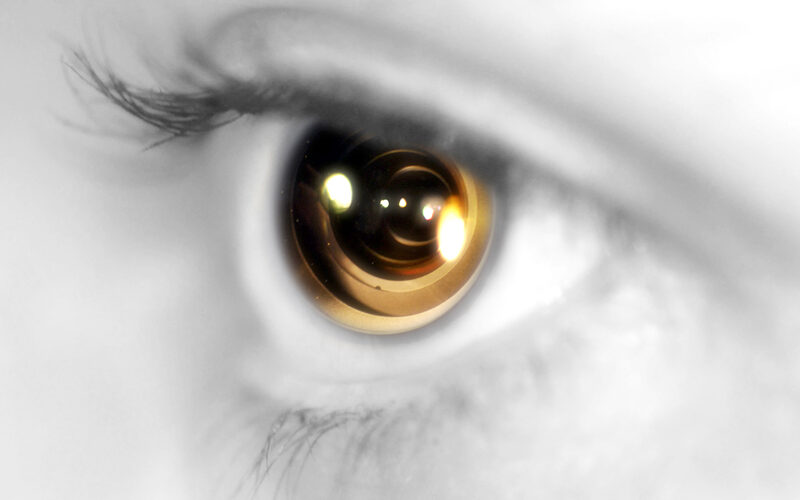Eye-Robot: An insight into the growing field of bionic vision

Hold out your hand. Focus your eyes on it. Notice the tiny hairs, miniscule wrinkles and clearly defined edges. The biological and electrochemical processes which take place to convert the pattern of photons entering your eye into a thought such as “Is it normal for hands to be so hairy?” are in equal parts complex and brilliant. We often take the wonder of our eyesight for granted, but there are millions of visually impaired people across the globe who have permanently lost that ability. However, with recent technological advances and promising clinical trials in the field of visual prostheses or “bionic eyes”, this could all be about to change.
Light entering the human eye is trapped and converted into electric neural signals by the retina, a light-sensitive layer at the back of the eye. Our ability to achieve this is owed to some of the most complex and highly specialised cells in our bodies. These are known as rods and cones. Rods distinguish between areas of light and dark, whilst cones separate light according to its wavelength, or colour. The information collected from the rods and cones is passed to neural cells called ganglion cells, which gather and summarise the messages received from hundreds of rods and then sends a pulse to the brain. The visual cortex at the back of the brain receives millions of these electrical pulses every second and interprets them as an overall shape, colour and pattern, allowing you to interpret the world that surrounds you.
It is the complexity of this system that allows us to receive such a rich picture of our environment but that very same complexity works against us in the search for treatments of blindness. Blindness is often caused by damage to the retina, causing a loss of vision which has been impossible to fix before now. The retina is made up of over 100 million rods, cones and ganglion cells, how could we ever hope to replicate their function?
The dream of designing devices that can interact with such a complicated system to simulate vision would have seemed impossible even a couple of decades ago, but we are now on the very brink of realising it. A number of visual prostheses are currently under development and available for purchase. Some aim to simulate vision by sitting on the retina and acting as rods and cones, whilst others plant electrodes into the retina to directly stimulate ganglion cells. One company is even looking at implanting electrode arrays into the visual cortex, offering a complete bypass of any fault in the visual pathway.
There are two devices currently licensed for use in Europe. One is called Argus II and has been designed by a Californian biomechanics company called SecondSight, whilst the other is a German implant called the IMS Alpha microchip. 1
The basic idea behind the Argus II system is to convert a 2D greyscale image (captured by a camera mounted on a pair of will.i.am-esque shades) into a set of electrical discharges fired straight into the retina. These patients have a miniscule implant surgically placed onto the inside of the retina, which stimulates the ganglion nerve cells via 64 tiny electrodes. Which electrodes discharge, and the size of the voltage are dependent on the patterns of light and dark captured by the camera. These charges are transmitted through the cells and down the optic nerve into the brain.
Upon reaching the brain, the signals from the implant are more likely to be experienced as indecipherable flashes of varying brightness rather than clear vision – this is to be expected when we downgrade 100 million natural photoreceptors to a 64 pixel electrode array – but with time the brain can learn to interpret these flashes as useful information. Successfully treated blind patients have been able to identify door frames, differentiate squares from circles, enjoy fireworks and even to sort socks according to shade.

How much is eyesight worth? Image credit: epSos.de via Flickr CC BY-ND 2.0 license
Crucially, these devices are only useful in the treatment of conditions which directly affect the retina, as they allow us to bypass damaged rods and cones. The main condition they have been tested in is a disease called retinitis pigmentosa, a rare inherited condition in which the retina gradually stops working – causing complete blindness at a very young age. Argus II has been used to treat this condition in several sets of people in the last decade, usually with very positive reviews 2. Unfortunately, however, the technology remains very expensive. 3
Though this is ground-breaking stuff, and undoubtedly life-changing for the few people who are affected by RP and can afford the treatment, its relevance for the majority of us in the UK remained fairly dubious until this summer. This July, a world first was achieved in Manchester when a man named Ray Flynn was given an Argus II implant as an experimental treatment for Macular Degeneration 4 Macular degeneration is a disease which afflicts the retinas of millions of elderly people across Britain, causing their eyesight to degrade from the inside out, leaving massive blind patches in the centre of their vision. The implant was successful and early signs were promising. If Ray continues to improve and benefit from his implant, he may be the first of many.
The incidence of Macular Degeneration is on the rise in the UK with the aging population. Perhaps within our lifetime these devices will be as common as hearing aids. Or perhaps not. But either way, the very ability to create artificial vision is an incredible achievement and suggests that the future may well be about to look a lot brighter.










